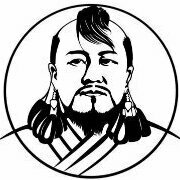Лидеры
Популярный контент
Показан контент с высокой репутацией 12/01/14 во всех областях
-
Ю.А.Зуев. Историческпая проекция казахских генеалогических преданий: «... по имеющимся признакам (малый рост, широкая спина, небольшие копыта), речь идет о метизированной с тарпаном породе домашней лошади. Метод выведения полудиких низкорослых коней с высокими скоростными качествами, большой выносливостью и неприхотливостью путем свободного выпуска косяков кобылиц в горные долины для скрещивания с дикими жеребцами был известен у тюркских народов с глубокой древности. Полученное таким образом потомство не отличалось изяществом форм и ростом, но по всем остальным статьям не имело себе равных. Появление тюркских полукровок произвело настолько большое впечатление при дворе аббасидских халифов и на всем Ближнем Востоке, что за ними стали снаряжаться специальные экспедиции (Esin E. The horse in turcic art. – Central Asiatic Journal, vol. 10, №. 3-4, p. 201-209). Вероятно, точное обозначение породы этих коней появилось довольно поздно. Арабские писатели называли их таги (АКБ: кстати, это есть прямое доказательство того, что современное монголоязычное «тахи» или «тахь» есть заимствование из тюркского, на казахском это «тағы»); у Махмуда Кашгарского упомянуты также кони аркун – «помесь дикого жеребца и домашней лошади; они берут первое место на скачках (МК, Т.1, с132).» Получается, что сами арабы ценили тюркскую степную лошадь, а мы нонче без ума от арабской.1 балл
-
The Chinese invented papermaking in A.D.105 (about 2,000 years ago). A court official named Ts’ai Lun under the Chinese Emperor Ho Ti made paper from hemp, old cloth, and mulberry bark mixed with water. This mixture was formed into a sheet, the water was squeezed out, and the sheet was allowed to dry in the sun. Paper remained a secret of the Chinese until A.D. 751, when Muslim invaders captured a Chinese paper mill and took the secret across the Near East and North Africa to Europe. In 1151, the first paper mill was built in Spain. Считается что китайцы изобрели бумагу и пр. В те времена Китаем правили тюрки-кочевники, а их имена были искажены до неузнаваемости на китайский манер иероглифами. Французские археологи в захоронениях древних казахов (тюрков-кочевников хунну) нашли бумагу - лет за 200 до ее "изобретения" в Китае. Вот такой, товарищи, факт. Читайте историю Степи и Китая на иностранных языках! { http://www.crcc.cnrs.fr/IMG/pdf/Abstracts_Workshop.pdf } ANDRE Guilhem, Scientific secretary, and ROUCHON Véronique, Senior Conservation Scientist Excavation of an Archeological Paper from Gol Mod site (Mongolia) Although the existence of paper is attested in China by recent archaeological excavations linked to the Han dynasties (206 BC–220 AD), such discoveries remain very rare in Eastern Asia. Until recent times, the presence of paper was only confirmed in China. The oldest example known to date outside of the Chinese boundaries, and precisely dated between the end of the 1st century BC and the middle of the 1st century AD, has just been discovered by the French archaeological Mission in Mongolia at the site of Gol Mod in Central Mongolia. The Gol Mod necropolis is one of the rare burial sites intended for the elite of a half-nomadic tribe confederation known as Xiongnu (ca. 3rd c. BC–3rd c. AD). In this cemetery, one of the largest monuments, the grave T20, revealed a substantial quantity of artifacts, amongst which chariots must apparently be regarded as specific symbols of power. In this grave, the chariot 2 contained a paper fragment used as filling material. We will describe the vehicle and compare it with specimens found in China and Mongolia and provide the result of the test made on this fragment, then we will try to y locate the fragment in the set of the preceding discoveries of old papers in China and more generally in the history of the invention of paper. Mission Archéologique Française en Mongolie, Musée Guimet /UMR 7041, 6 place d'Iéna 75116 Paris, France guilhemandre@yahoo.com , Tel +33-1-44 82 50 26, Fax +33-1-47 20 97 45 Centre de recherche sur la conservation des collections (CRCC), 36 rue Geoffroy Saint-Hilaire 75005 Paris, France rouchon@mnhn.fr ,Tel +33-1-40 79 53 03, Fax +33-1-40 79 53 12 Перевод: Хотя существование бумаги подтверждено в Китае недавними археологическими раскопками связанными с династиями Хан (или Хань -А.) (206 г. до н.э. - 220 г. н.э.), такие открытия очень редки в восточной Азии. До недавнего времени присутствие бумаги было подтверждено только в Китае. Старейший пример известный к настоящему времени за пределами китайских границ точно датируется между концом I века до н.э. и серединой I века н.э. был открыт французской археологической миссией в Монголии в месте (под названием) Гол Мод в центральной Монголии. Некрополь Гол Мод - это одно из редких захоронений предназначенных для элиты полукочевой племенной конфедерации известной как Хунну (приблиз. III в. до н.э. - III в. н.э.). На этом кладбище, один из главных монументов, могила Т20, раскрыла существенное количество артефактов, среди которых колесницы должно быть считались за особый символ власти. В этой могиле колесница 2 содержит бумажный фрагмент использовавшийся как наполнительный материал. Мы опишем это средство передвижения и сравним его с образцом найденным в Китае и Монголии и приведем результат анализа этого фрагмента, затем мы попробуем определить место этому фрагменту в ряду предшествовавших открытий древних бумаг в Китае, и вообще, в истории изобретения бумаги.(Конец цитаты). Японские ученые тоже утверждают что бумага была изобретена в Средней Азии и оттуда позже попала в Китай (где императорами были тюрки-кочевники): {http://zopeman64.bbaw.de/bbaw/Forschung/Forschungsprojekte/turfanforschung/bilder/Vortrag_Enami.pdf} Paper made from Millet and Grass Fibre found in the Secular Documents of Pre-Tang and Tang Dynasty ENAMI Kazuyuki*, SAKAMOTO Shoji, OKADA Yoshihiro, Digital Archives Research Centre, Ryukoku University, Otsu, Japan MASUDA Katsuhiko, Showa Women’s University, Tokyo, Japan *Hieitsuji 2-10-16-109, Otsu, 520-0104, Japan, e-mail:stkb40786@ares.eonet.ne.jp Conclusion 5. All these observations suggest that papermaking technology using grass or cereal straw fibre began in Central Asian region, the western front of Chinese Empire, and had been diffused into China mainland. Rice straw paper seems to have its origin in those cereal straw origin paper invented in Central Asian region. Перевод Заключение 5. Все эти наблюдения предполагают что технология бумагоделания с использованием травы или зернового соломенного волокна началась в среднеазиатском регионе, на западной границе Китайской империи, и просочилась в собственно Китай. Бумага из рисовой соломы по-видимому имеет свое происхождение в той первоначальной бумаге из зерновой соломы изобретенной в среднеазиатском регионе. { http://www.paperhistory.org/iph14-2.pdf } PAPER HISTORY, Volume 14, Year 2010, Issue 2 Origin of the difference in papermaking technologies between those transferred to the East and the West from the motherland China ENAMI Kazuyuki*, SAKAMOTO Shoji, OKADA Yoshihiro, Digital Archives Research Centre, Ryukoku University, Otsu, Japan, MASUDA Katsuhiko, Showa Womens’University, Tokyo, Japan KHONO Masuchika, Kyoto University, Kyoto, Japan *Hieitsuji 2-10-16-109, Otsu, 520-0104, Japan e-mail:stkb40786@ares.eonet.ne.jp Abstract Morphology and raw materials of paper from over 50 Chinese documents of the 6th to 8th centuries, mainly of Tang Dynasty in the Otani Collection, were analysed by high resolution digital microscope. Clear difference was found in paper quality and raw materials between the military documents of the Turfan brigade and the official ones of the local government. Most of the military documents, 23 of total 28 analysed were found to be written on rag origin paper, while most of documents used by the local government were recorded on usual hemp or mulberry paper in Tang Dynasty in that period. The fact was found that the rag paper was made inside the brigade. This finding suggests that the Turfan brigade organized the advanced logistics to their own local supply of the highly necessary material for the operation and management of the brigade. The fact that old fashioned rag paper of the primitive papermaking craft was found in the military documents of the Turfan brigade would give important and decisive information of the origin of the papermaking craft that was spread westwards. The story is widely accepted among historians of the transferring of paper craft from China to the West at the battle between Chinese army and Arab army in 751 at Talas. However the real reason why Arabs and then later Europeans had continued the primitive papermaking craft using cloth rag until the 19th century is yet unclear, in spite of the fact that sophisticated papermaking technology using tree bark, shrub or other plant fibre had been widely spread in China, Central Asian oases kingdoms and Asian countries already in the 8th century. The present results would give an answer to this question. The papermaking craft, obtained by Chinese craftsmen captured by the Arab army at the battle, was not the sophisticated technology using plant fibres, but the primitive craft using cloth rag adopted by the Turfan brigade logistics.1 балл
-
Свежие фото российского туриста (2014 г.) лишь подтверждает мою версию: Удивительно! На фото строения сняты на фоне вполне приличной горы , но автор пишет - "гор как таковых нет!". Это что? Астигматизм?-1 балл


